13 Big-Leaf Plants That Make A Statement In Any Home:
Big-Leaf Plants are a fantastic way to bring bold, dramatic visual interest into your home. With their oversized foliage, they stand out as statement pieces, creating an immediate impact in any room. Whether you’re looking to liven up a corner or add a tropical vibe, big-leaf plants are a perfect choice.
These plants not only add beauty but also help transform the overall aesthetic of your living space, making them ideal for those who want to create an eye-catching interior design.
Why Big-Leaf Plants Are Perfect for Statement Decor?
Big-leaf plants provide a striking contrast to smaller, more delicate houseplants, offering a sense of lushness and fullness to any environment. Their wide leaves serve as natural focal points, allowing them to draw the eye and infuse the room with a sense of vitality and elegance.
By incorporating these bold plants into your home, you can effortlessly elevate your décor, giving your space a fresh, modern, and vibrant feel.
1. Monstera Deliciosa (Swiss Cheese Plant)
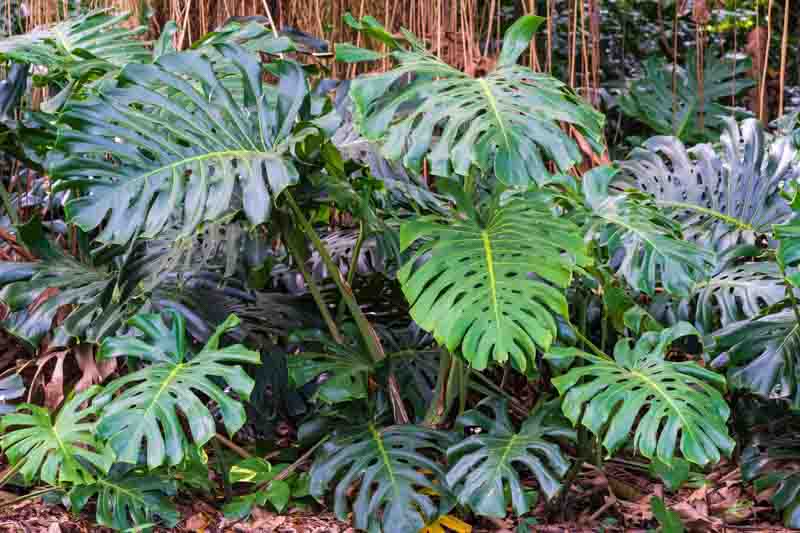
The Monstera Deliciosa, also known as the Swiss Cheese Plant, is instantly recognizable for its iconic, split leaves that give it a unique and striking appearance. As the plant matures, the leaves develop large holes or “cheese-like” perforations, which give it a tropical and exotic look. Its glossy, deep green foliage adds a bold, dramatic element to any indoor space.
Care Tips:
Monstera Deliciosa is relatively easy to care for, making it a popular choice for beginners. It thrives in bright, indirect light but can also tolerate lower light levels. Water the plant when the top 1-2 inches of soil feel dry to the touch, and be sure to provide good drainage to prevent root rot.
This plant also enjoys humidity, so placing it in a bathroom or kitchen can be ideal, but it will do well in most indoor environments as long as it’s not exposed to direct, harsh sunlight.
Best Spots for Placement:
Monstera Deliciosa can make a statement in various spots throughout your home. It thrives in larger spaces like living rooms or hallways, where its tall growth and large leaves can stand out. It’s perfect for placing near a window with bright, indirect light but can also adapt to lower light conditions.
If you have a high-ceilinged room, the Monstera’s climbing nature can be supported with a trellis or moss pole, allowing it to grow upward and fill vertical space beautifully.
Style Tips:
For a natural, jungle-inspired aesthetic, pair your Monstera Deliciosa with other tropical plants like ferns, palms, or snake plants. Its large, glossy leaves work beautifully with modern, minimalist décor by adding texture and a touch of green to otherwise neutral spaces. To further enhance its boldness, use a simple, stylish planter in a natural material like woven rattan or a matte ceramic pot.
2. Alocasia Polly (African Mask Plant)

The Alocasia Polly, also known as the African Mask Plant, is a stunning plant with unique, arrow-shaped leaves that feature intricate silver veins. Its glossy, dark green foliage and striking contrast with silvery-white veins give it a bold, sculptural appearance, making it the perfect statement piece for those who love drama in their décor.
Care Tips:
Alocasia Polly requires a bit more attention, but its beauty is worth the effort. It thrives in bright, indirect light and prefers a warm, humid environment. Keep the soil consistently moist, but avoid overwatering, and mist regularly to maintain humidity levels. Be sure to place it in a location with indirect sunlight to prevent leaf burn.
Best Spots for Placement:
This plant’s bold foliage makes it an excellent choice for living rooms, entryways, or any space where you want to make an impact. Its dramatic leaves stand out when placed in central spots or near doorways, where its beauty can truly shine. Pair it with other statement plants for a tropical or modern touch.
Style Tips:
For an elegant look, place the Alocasia Polly in a sleek, matte black or white pot to highlight its striking foliage. It pairs well with other large-leaf plants, like the Fiddle Leaf Fig or Bird of Paradise, to create a cohesive, dramatic atmosphere. The plant’s dark green and silver hues complement both minimalist and tropical-inspired décor.
3. Philodendron Selloum (Lacy Tree Philodendron)
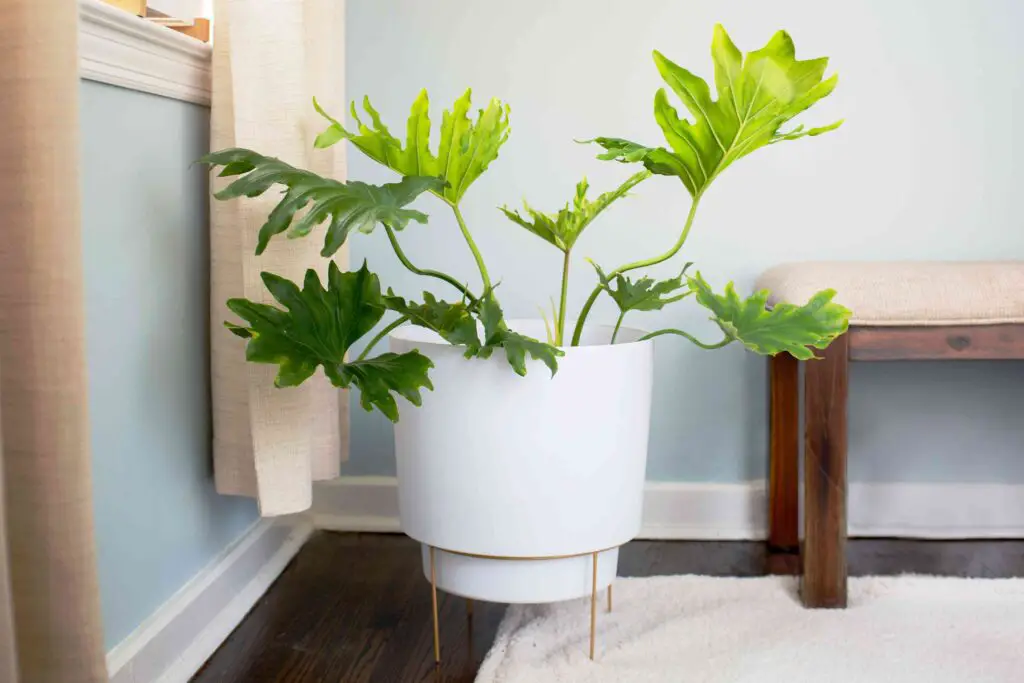
The Philodendron Selloum, also known as the Lacy Tree Philodendron, is renowned for its large, deeply lobed leaves that create a lush, tropical appearance. The bold, dark green foliage adds a touch of elegance and depth to any room, making it a standout plant for interiors that need a bit of greenery and texture.
Care Tips:
This plant thrives in bright, indirect light, though it can tolerate lower light conditions as well. Keep the soil consistently moist but allow it to dry slightly between waterings. Regular misting or placing the plant in a humid environment can help maintain its lush growth. Avoid direct sunlight, which can scorch its delicate leaves.
Best Spots for Placement:
Philodendron Selloum is perfect for bright, indirect light spaces, such as living rooms, offices, or kitchens with plenty of natural light. Its large size makes it ideal for filling corners or creating focal points in rooms that could use some greenery. This plant’s sprawling leaves also look beautiful when placed in open areas where it has room to grow.
Style Tips:
To highlight its bold appearance, consider placing the Philodendron Selloum in a simple, neutral pot that complements its large leaves. It pairs beautifully with other tropical plants and adds a touch of sophistication to modern, minimalist, or boho-style interiors.
4. Fiddle Leaf Fig (Ficus lyrata)

The Fiddle Leaf Fig is famous for its oversized, violin-shaped leaves that make it a standout addition to any indoor space. Its large, glossy leaves create a bold, dramatic presence, making it a perfect plant for filling empty corners or serving as a focal point in your home décor. Its striking appearance adds a sophisticated touch to modern or tropical-inspired interiors.
Care Tips:
To keep your Fiddle Leaf Fig healthy, place it in a spot with bright, indirect light. It thrives in warm temperatures and needs consistent moisture, but be careful not to overwater—let the soil dry out between waterings. This plant is sensitive to sudden changes in temperature or drafts, so avoid placing it near air conditioning units or heating vents. Dust the leaves regularly to keep them clean and free of pests.
Best Spots for Placement:
The Fiddle Leaf Fig does best in bright, well-lit rooms with plenty of natural light. Ideal spots include near windows or in areas that receive indirect sunlight. It can be placed in living rooms, entryways, or any larger space where its bold leaves can truly shine. As it can grow quite tall, it works well as a dramatic statement piece or in corners where it can grow to its full potential.
Style Tips:
For a minimalist or contemporary look, place your Fiddle Leaf Fig in a sleek, simple pot that lets its foliage take center stage. It pairs beautifully with modern furniture and can be the perfect accent to a neutral-colored room. Additionally, grouping it with other plants, such as Monstera Deliciosa or Rubber Plants, can help create a vibrant, tropical atmosphere.
5. Banana Plant (Musa spp.)
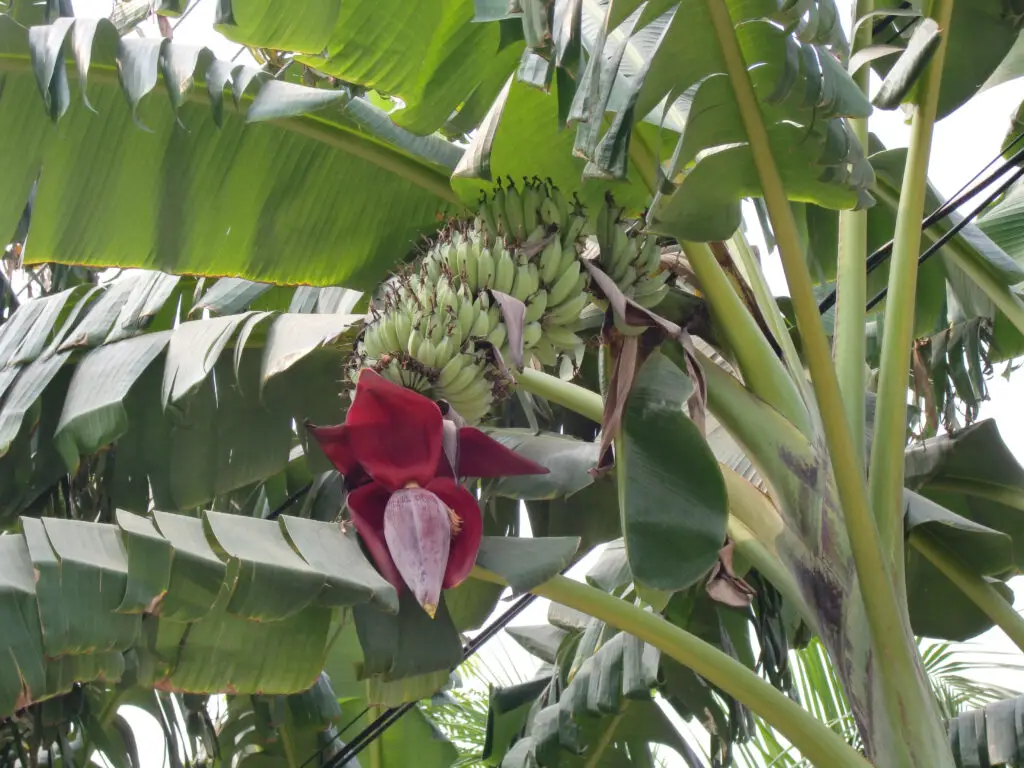
The Banana Plant (Musa spp.) brings a large, bold, and tropical look to any space with its broad, vibrant leaves. Known for its dramatic, lush foliage, it creates an instant jungle vibe, making it an ideal choice for those who want to bring a taste of the tropics into their home. Its large leaves make it a striking addition to living rooms, patios, or any space in need of vibrant greenery.
Care Tips:
Banana Plants thrive in bright, direct sunlight, which encourages their large leaves to grow quickly. They require consistently moist soil, but be sure to avoid waterlogged conditions. Regular misting or placing the plant on a humidity tray will help it thrive, especially in drier environments. Fertilize during the growing season to encourage healthy, lush growth.
Best Spots for Placement:
The Banana Plant loves sunny spots, so place it near a bright window or in an area where it can receive plenty of direct sunlight. It works best in spacious rooms or open spaces where its bold, tropical appearance can be fully appreciated. As the plant grows, it can reach impressive heights, so make sure there is ample room for its large leaves to spread out.
Style Tips:
To enhance the tropical feel of the Banana Plant, pair it with other lush, large-leaf plants like the Monstera Deliciosa or the Bird of Paradise. A woven basket or a simple, neutral pot will complement its vibrant leaves and add a natural, earthy touch to the décor. For a striking focal point, position it in a corner where it can fill vertical space and stand out as a lush centerpiece.
Related Topics:
6. Giant Taro (Alocasia macrorrhizos)
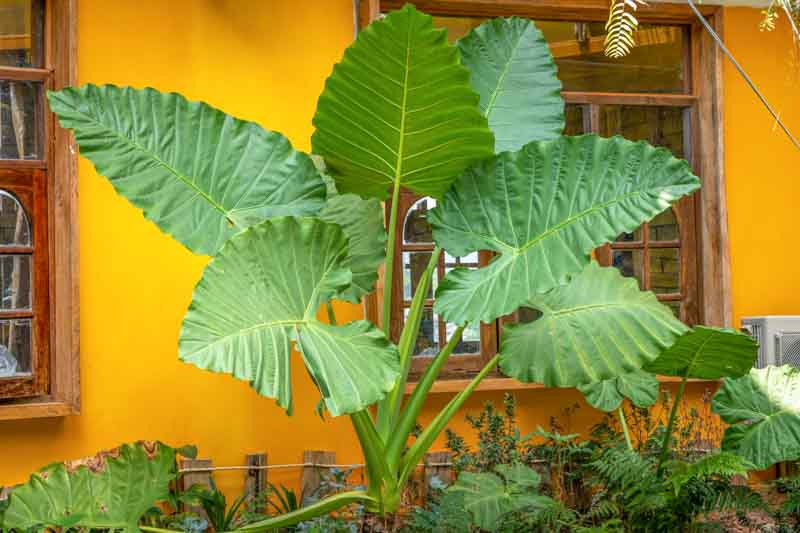
The Giant Taro (Alocasia macrorrhizos) is known for its massive, heart-shaped leaves that create an instant statement in any room. Its bold, dramatic foliage brings an exotic, tropical look that makes it a perfect choice for those looking to add a striking focal point to their home. The large, glossy leaves can reach impressive sizes, giving the plant a bold presence in your space.
Care Tips:
Giant Taro thrives in bright, indirect light but can tolerate some direct sunlight. It prefers consistently moist soil, so be sure to water it regularly while allowing the top of the soil to dry slightly between waterings. This plant enjoys high humidity, so it benefits from misting or being placed on a humidity tray. Keep it in a warm environment, and avoid drafts or sudden temperature changes, which can harm its delicate leaves.
Best Spots for Placement:
Due to its large size, the Giant Taro is ideal for spacious areas with bright, indirect light, such as living rooms, sunrooms, or even large hallways. Its large, heart-shaped leaves make it an eye-catching plant for corners or areas where it has room to grow. This plant works beautifully as a statement piece in a room that can accommodate its size and bold appearance.
Style Tips:
To highlight the Giant Taro’s dramatic leaves, pair it with other lush, tropical plants like the Bird of Paradise or Philodendron Selloum. A simple, neutral-colored pot allows the plant’s striking foliage to take center stage. Its large size makes it an excellent choice for creating a bold focal point or filling an empty corner with vibrant greenery.
7. Elephant Ear (Colocasia esculenta)
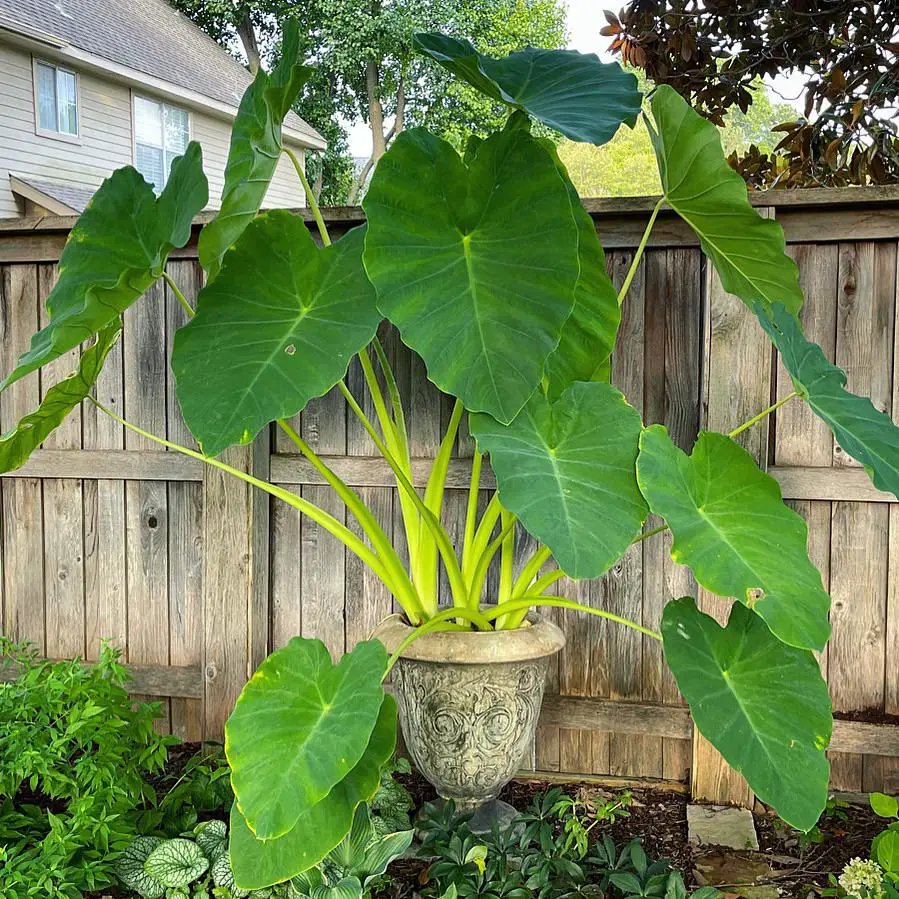
The Elephant Ear (Colocasia esculenta) is known for its large, dramatic, heart-shaped leaves that resemble the ears of an elephant, giving it a bold and eye-catching appearance. Its lush foliage adds an exotic, tropical feel to any space, making it an ideal plant for creating a statement piece in both modern and tropical-themed interiors.
Care Tips:
Elephant Ear plants love water and thrive in consistently moist soil, so be sure to keep the soil damp without letting it become waterlogged. They prefer bright, indirect light but can tolerate some direct sunlight, especially in the morning. Regular misting and placing the plant in a humid environment will help it grow vigorously. During the growing season, feed it with a balanced fertilizer to encourage healthy growth and large leaves.
Best Spots for Placement:
The Elephant Ear thrives in humid, bright locations, making it perfect for bathrooms, kitchens, or any room with ample natural light. It does well in large, open spaces where its bold leaves have room to grow and spread out. Place it in a central position, such as in a corner of a room, near a window with indirect sunlight, to let its dramatic foliage become a focal point.
Style Tips:
To emphasize the Elephant Ear’s dramatic leaves, pair it with other large-leaf plants or tropical decor. A simple, elegant pot—preferably in earthy tones or natural materials—will let the plant’s bold foliage shine. Its large, lush appearance works well in open spaces and can create a striking focal point, whether placed in a corner or near a doorway.
8. Rubber Plant (Ficus elastica)
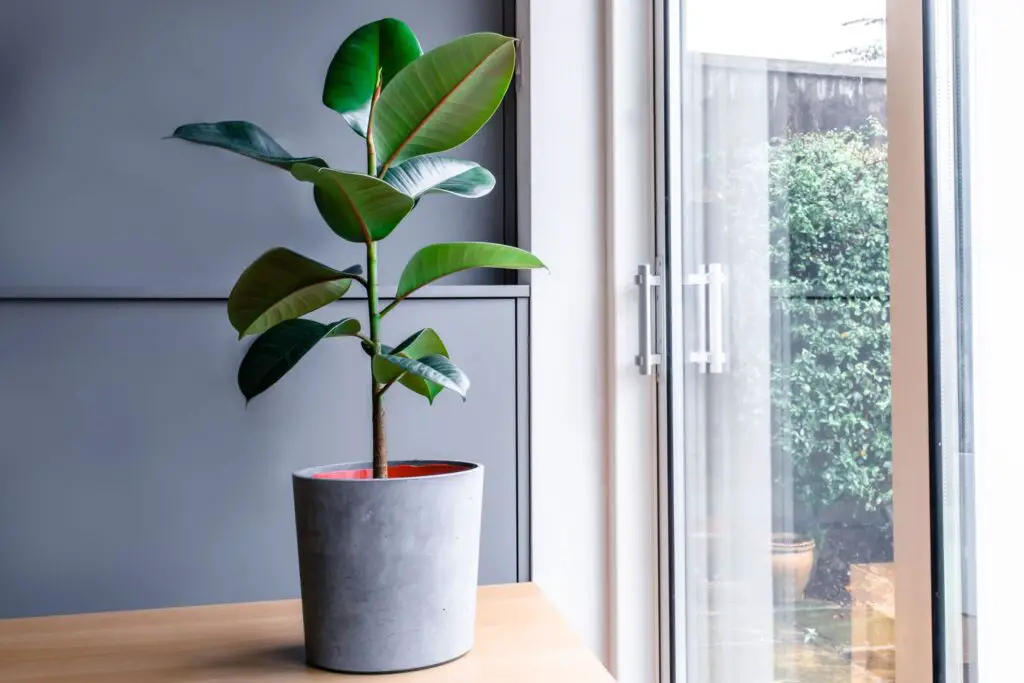
The Rubber Plant (Ficus elastica) is admired for its glossy, wide leaves that create a sleek, elegant look. Its deep green, waxy leaves can make a bold statement in any room, adding both structure and beauty to your space. Whether used as a standalone piece or paired with other plants, the Rubber Plant’s sophisticated appearance brings a touch of refinement to modern and classic interiors alike.
Care Tips:
Rubber Plants are relatively easy to care for, making them ideal for both beginner and experienced plant owners. They thrive in bright, indirect light but can also adapt to moderate light conditions. Water when the top 1-2 inches of soil feel dry, ensuring good drainage to prevent root rot. Rubber Plants can tolerate a range of humidity levels, though they prefer slightly higher humidity. Wipe the leaves occasionally to keep them dust-free and allow them to shine.
Best Spots for Placement:
The Rubber Plant’s bold, glossy leaves make it an excellent choice for filling empty corners or adding height to a room. Place it in bright, indirect light to keep it thriving, such as near a window or in a well-lit living room. Its size and elegant foliage make it perfect for large spaces, including entryways or open-plan living areas, where it can act as a striking focal point.
Style Tips:
For a sophisticated look, pair your Rubber Plant with simple, modern décor and place it in a sleek, neutral pot. Its deep green foliage complements minimalist or industrial styles, but it also fits well in more eclectic interiors. To enhance its elegance, consider placing it next to furniture with clean lines or in a corner where its wide leaves can stand out
9. Cabbage Palm (Livistona rotundifolia)
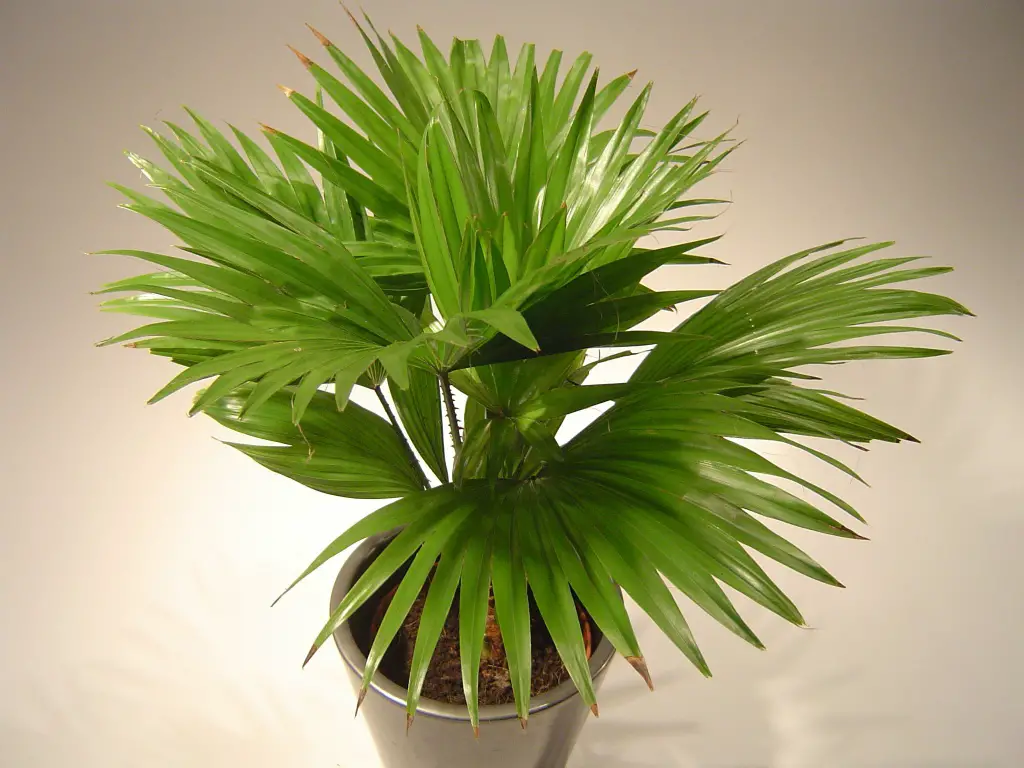
The Cabbage Palm (Livistona rotundifolia) is known for its large, fan-shaped leaves that create a soft, yet bold, visual effect. Its elegant, rounded fronds add a tropical flair to any room while maintaining a sense of sophistication. The plant’s impressive, arching leaves make it an eye-catching addition that effortlessly complements both modern and tropical-inspired interiors.
Care Tips:
The Cabbage Palm thrives in bright, indirect light but can also tolerate some lower light conditions. It prefers to be kept in slightly moist soil, but be sure not to overwater, allowing the soil to dry out between waterings. This palm also benefits from regular misting or humidity trays to ensure it stays healthy in dry indoor environments. It is relatively low-maintenance, making it a great option for both experienced and beginner plant lovers.
Best Spots for Placement:
The Cabbage Palm is best placed in bright, airy spaces with ample indirect sunlight. It looks fantastic in large, open rooms, such as living areas or foyers, where it can take center stage. Due to its height and broad fronds, this palm is ideal for corners or open spaces where it can be admired without being crowded by other furniture or plants.
Style Tips:
To emphasize the soft, bold look of the Cabbage Palm, consider placing it in a simple, neutral-colored pot that complements its fan-shaped fronds. It pairs beautifully with other tropical or large-leaf plants like the Bird of Paradise or Banana Plant. A stylish, woven basket or contemporary ceramic pot adds texture and enhances its elegant tropical vibe.
10. Bird of Paradise (Strelitzia reginae)
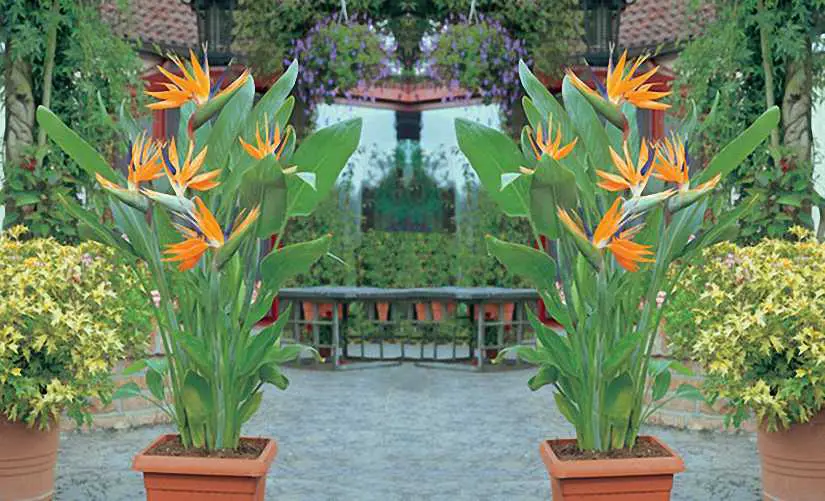
The Bird of Paradise (Strelitzia reginae) is known for its unique, large leaves and dramatic, bird-like flower spikes that make it a striking plant in any space. Its vibrant foliage and bold, tropical aesthetic bring a touch of exotic flair to your home. When in bloom, its bright orange and blue flowers add an extra layer of drama, making it a true statement plant.
Care Tips:
Bird of Paradise plants thrive in bright, indirect light and need plenty of sunlight to bloom. Keep the soil consistently moist, but avoid waterlogging, allowing the top layer of soil to dry out between waterings. These plants prefer warm temperatures and high humidity, so regular misting or a humidity tray can help maintain their lush growth. Fertilize during the growing season to encourage robust foliage and flowers.
Best Spots for Placement:
This plant loves bright, sunny spots, making it perfect for areas near windows that receive plenty of natural light. Place it in open spaces, such as living rooms, sunrooms, or entryways, where it can showcase its large leaves and dramatic flowers. Its size and striking appearance make it ideal for larger rooms where it can stand as a focal point.
Style Tips:
To enhance the bold nature of the Bird of Paradise, pair it with other tropical plants or modern décor. A sleek, minimalist pot allows the plant’s dramatic foliage and flowers to shine. Its large size and colorful blooms make it an eye-catching addition, so be sure to place it where it will stand out, such as near a window or in the center of a room.
11. Cordyline (Cordyline fruticosa)
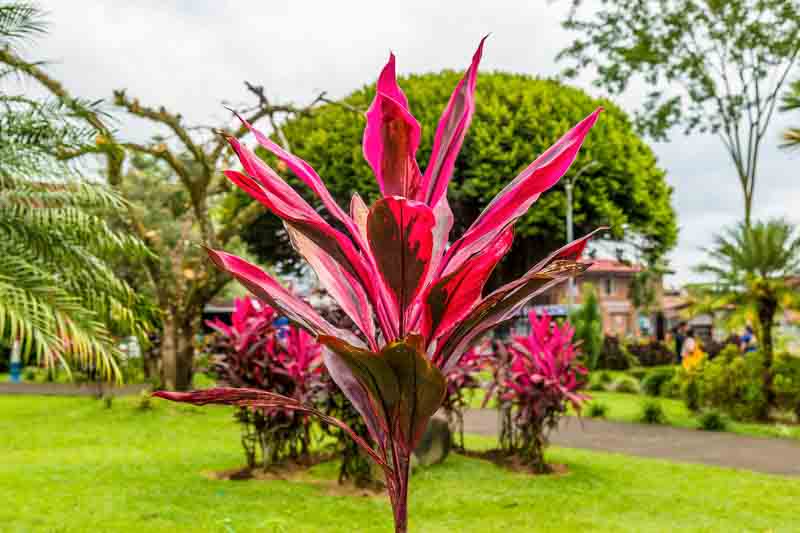
The Cordyline (Cordyline fruticosa) is a visually striking plant with vibrant, large leaves that come in various color combinations, including deep green, purple, pink, and red hues. Its bold, dramatic foliage adds a pop of color and texture to any space, making it a fantastic choice for modern home decor. The Cordyline’s unique color variations and spiky leaves make it an exciting and dynamic addition to your indoor garden.
Care Tips:
Cordylines prefer bright, indirect light but can tolerate lower light levels. Water the plant when the top 1-2 inches of soil feels dry, ensuring good drainage to prevent root rot. It thrives in moderately humid environments, so regular misting or placing the plant on a humidity tray can help maintain its vibrant appearance. Avoid placing it in direct sunlight, as this can scorch the leaves, and ensure it’s in a warm spot, away from drafts.
Best Spots for Placement:
Cordyline plants make excellent focal points in living rooms, hallways, or even near entryways, where their vibrant colors can instantly draw attention. They also look great in modern, minimalist spaces, where their sleek, bold foliage contrasts beautifully with clean lines and neutral tones. Due to their upright growth, Cordylines are perfect for filling vertical spaces and bringing a touch of color and energy to larger rooms or corners.
Style Tips:
For modern home decor, pair the Cordyline with other bold, architectural plants like the Fiddle Leaf Fig or Bird of Paradise. A sleek, minimalist pot in matte black or white complements its colorful foliage, allowing the plant to take center stage. The Cordyline’s vibrant colors work well with both contemporary and eclectic design styles, adding an unexpected burst of color to any room.
12. Xanthosoma (Elephant Ear)
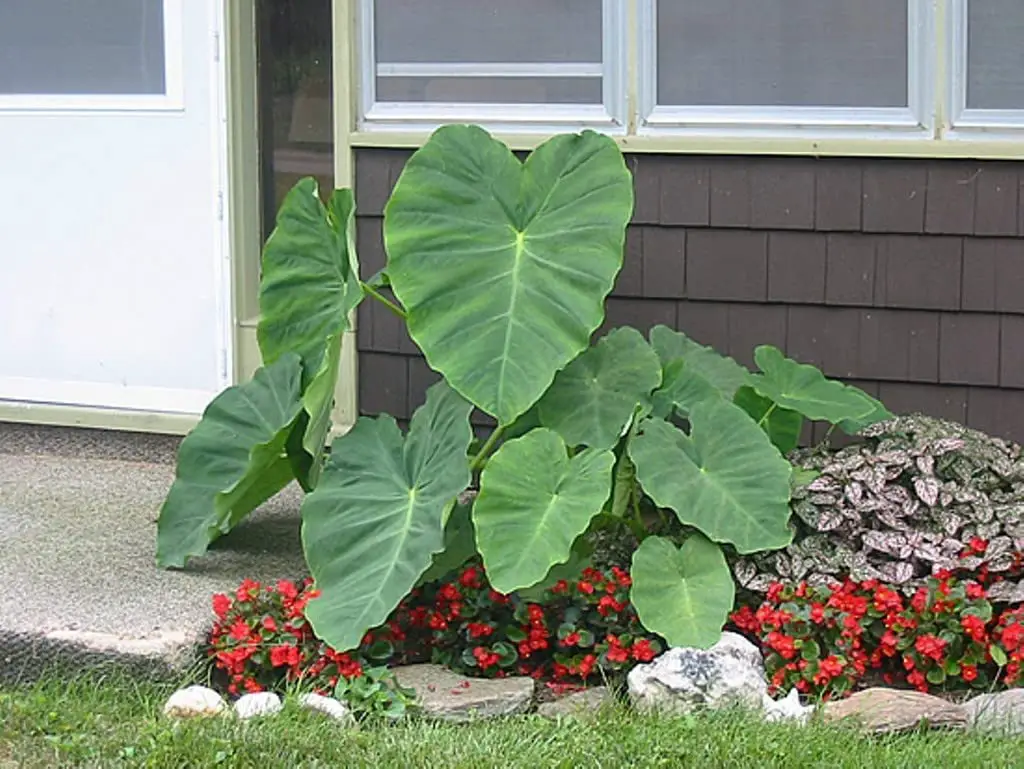
The Xanthosoma (commonly known as Elephant Ear) is a stunning plant with uniquely shaped, large, arrowhead-like leaves that exude a tropical flair. Its bold, glossy foliage brings a lush, exotic touch to any room. The plant’s dramatic appearance makes it an eye-catching addition, perfect for those looking to add a bit of tropical elegance to their indoor spaces.
Care Tips:
Xanthosoma thrives in bright, indirect light but can tolerate some direct sunlight, especially in the morning. It prefers consistently moist, well-draining soil, so be sure to water it regularly while ensuring the pot doesn’t retain excess water, which can cause root rot. To maintain its lush foliage, this plant benefits from higher humidity, so misting or placing it on a humidity tray will keep it happy. Fertilizing during the growing season promotes vibrant, healthy growth.
Best Spots for Placement:
Xanthosoma is ideal for bright spaces, such as living rooms, sunrooms, or kitchens, where it can receive ample natural light. Its large, dramatic leaves make it perfect for creating focal points in rooms with plenty of space, like near windows, corners, or even hallways. The plant’s tropical look makes it a great addition to areas where you want to add a touch of greenery and bold beauty.
Style Tips:
For a tropical or boho-chic look, place the Xanthosoma in a decorative, woven basket or a bold-colored pot to complement its large, striking leaves. It pairs well with other large-leafed plants like the Banana Plant or Alocasia. Due to its lush foliage, the Xanthosoma looks great as a statement plant in spacious, open areas, adding a dramatic flair to your home decor.
13. Dieffenbachia (Dumb Cane)
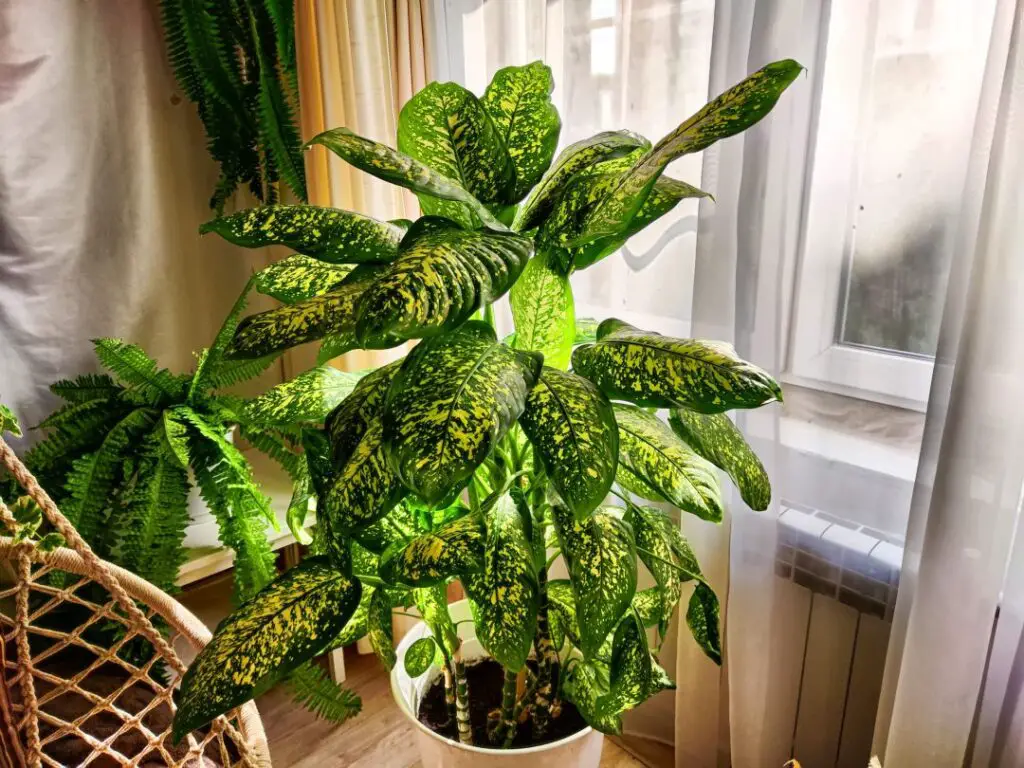
The Dieffenbachia (often called Dumb Cane) is a bold and striking plant known for its variegated, green and white or yellow-patterned leaves. These large, textured leaves create a vibrant contrast and add depth to any room. The Dieffenbachia’s lush foliage makes it an ideal plant for those looking to introduce both color and texture to their indoor spaces.
Care Tips:
Dieffenbachia thrives in bright, indirect light and should be kept out of direct sunlight, as this can scorch its leaves. It prefers consistently moist soil, but avoid overwatering by allowing the top layer to dry out between waterings. This plant is sensitive to cold drafts, so keep it in a warm, humid environment. Regular misting or placing the plant on a humidity tray will help it flourish, especially in drier homes.
Best Spots for Placement:
The Dieffenbachia is perfect for areas with bright, indirect light, such as living rooms, offices, or bathrooms with good natural light. Its bold, variegated leaves make it a statement plant for corners, near windows, or in spots where it can fill vertical space. It’s also an excellent plant for spaces that need a pop of greenery and contrast but aren’t exposed to direct sunlight.
Style Tips:
For a refined look, pair the Dieffenbachia with other plants that feature dramatic foliage, such as the Fiddle Leaf Fig or Rubber Plant. A simple, elegant pot in neutral tones allows the bold, variegated leaves to take center stage. This plant works beautifully in both modern and more traditional spaces, adding texture and color without overwhelming the room’s design.
How to Care For Big-Leaf Plants?
Big-leaf plants are a stunning addition to any home, but they require some specific care to thrive. To ensure your plants reach their full potential, understanding their needs for watering, lighting, soil, and overall maintenance is crucial.
Watering:
Big-leaf plants generally prefer consistently moist soil, but they don’t like to be overwatered. Overwatering can lead to root rot, especially in plants that have large leaves, which can trap moisture in the soil for longer periods. Water your plant when the top 1-2 inches of soil feel dry, but make sure the pot has proper drainage.
Always check that excess water can escape to prevent standing water at the bottom of the pot. Some plants, like the Alocasia or Elephant Ear, also thrive in higher humidity, so regular misting or using a humidity tray can benefit them.
Lighting:
Most big-leaf plants prefer bright, indirect light. Direct sunlight can scorch the large leaves, causing them to yellow or develop burn spots. However, certain plants, like the Rubber Plant and Bird of Paradise, can tolerate some morning or late afternoon sun. If your plant is placed in a spot with too little light, its growth may slow down, and the leaves could become smaller or lose their vibrant color.
Always monitor the light levels and adjust their position if necessary.
Soil Preferences:
Big-leaf plants typically do well in well-draining, loamy soil. A good-quality potting mix that allows excess water to drain while still retaining some moisture is ideal. For plants like the Dieffenbachia or Giant Taro, adding perlite or sand to the soil mix can improve drainage. Always choose a pot with drainage holes to prevent the roots from sitting in excess moisture.
Challenges and Common Mistakes to Avoid:
While caring for big-leaf plants can be rewarding, there are a few challenges and common mistakes to watch out for:
- Overwatering: It’s easy to be tempted to water frequently, but overwatering is a leading cause of plant stress. Be mindful of your plant’s watering needs and always allow the soil to dry out between waterings.
- Insufficient Light: Big-leaf plants may appear fine in lower light conditions, but they will not thrive. Ensure your plant receives the proper amount of indirect sunlight, and don’t place them in dark corners of the room.
- Low Humidity: Many big-leaf plants, like the Alocasia Polly and Elephant Ear, need humidity to stay healthy. Without it, their leaves may dry out, curl, or develop brown tips. Regular misting or a humidity tray can help.
- Not Cleaning the Leaves: Dust can accumulate on the large leaves, blocking sunlight and affecting the plant’s overall health. Wipe the leaves gently with a damp cloth to keep them clean and encourage optimal photosynthesis.
Ensuring Your Big-Leaf Plants Thrive:
With proper care, your big-leaf plants can grow strong, lush, and beautiful. Pay attention to their water and light preferences, choose the right soil, and provide the humidity they need to flourish. Avoid common mistakes such as overwatering or placing them in poor light conditions. With these tips, your big-leaf plants will become healthy, thriving statement pieces in your home.
Final Thoughts: Make A Statement With Big-Leaf Plants:
Big-leaf plants are a powerful way to transform any space, bringing bold, dramatic beauty and a touch of nature into your home. Whether it’s the striking split leaves of a Monstera, the sculptural foliage of an Alocasia, or the tropical grandeur of a Bird of Paradise, these plants make a statement like no other.
Their large, eye-catching leaves create visual interest, becoming natural focal points that elevate your interior decor.
When selecting a big-leaf plant, consider your home’s lighting, space, and style. Some plants may thrive in brighter, sunlit areas, while others prefer shadier spots. By choosing the right plant for your space, you can seamlessly integrate these stunning greens into your decor.
Remember, big-leaf plants not only enhance the visual appeal of your space—they also bring life, texture, and a sense of calm to any room. So, pick a plant that suits your aesthetic, and let it make a lasting impression in your home.
Incorporating big-leaf plants into your home decor is an excellent way to introduce natural beauty, texture, and a sense of tranquility to your living space. Their bold, oversized foliage brings a unique aesthetic that effortlessly enhances any room, making them the perfect statement pieces.
Whether you opt for the dramatic leaves of a Fiddle Leaf Fig, the tropical vibe of a Banana Plant, or the striking pattern of a Dieffenbachia, these plants offer endless possibilities to suit various styles and spaces.
We encourage you to explore the wide range of big-leaf plants available and find one that complements your home. Bring nature indoors and let these vibrant, eye-catching plants transform your environment, creating a lush, inviting atmosphere filled with bold, green energy.
FAQs:
1. How often should I water big-leaf plants?
Big-leaf plants typically prefer consistently moist soil, but they don’t like to sit in water. Water your plant when the top 1-2 inches of soil feel dry, making sure to allow excess water to drain. Avoid overwatering, as this can lead to root rot. Always ensure your pot has drainage holes to prevent water from accumulating at the bottom.
2. Can big-leaf plants thrive in low-light conditions?
Most big-leaf plants, such as the Monstera and Rubber Plant, prefer bright, indirect light to thrive. While some plants can tolerate lower light levels, they won’t grow as vigorously or may have smaller leaves. To ensure your big-leaf plants thrive, place them in areas with plenty of natural light, but avoid direct sunlight, which can scorch their large leaves.
3. What is the best way to increase humidity for big-leaf plants?
Many big-leaf plants, like the Alocasia and Elephant Ear, thrive in humid environments. To increase humidity, mist the leaves regularly or use a humidity tray filled with water and pebbles. Placing your plant in a bathroom with good natural light or near a humidifier can also help maintain the necessary moisture levels to keep your plants healthy and vibrant.

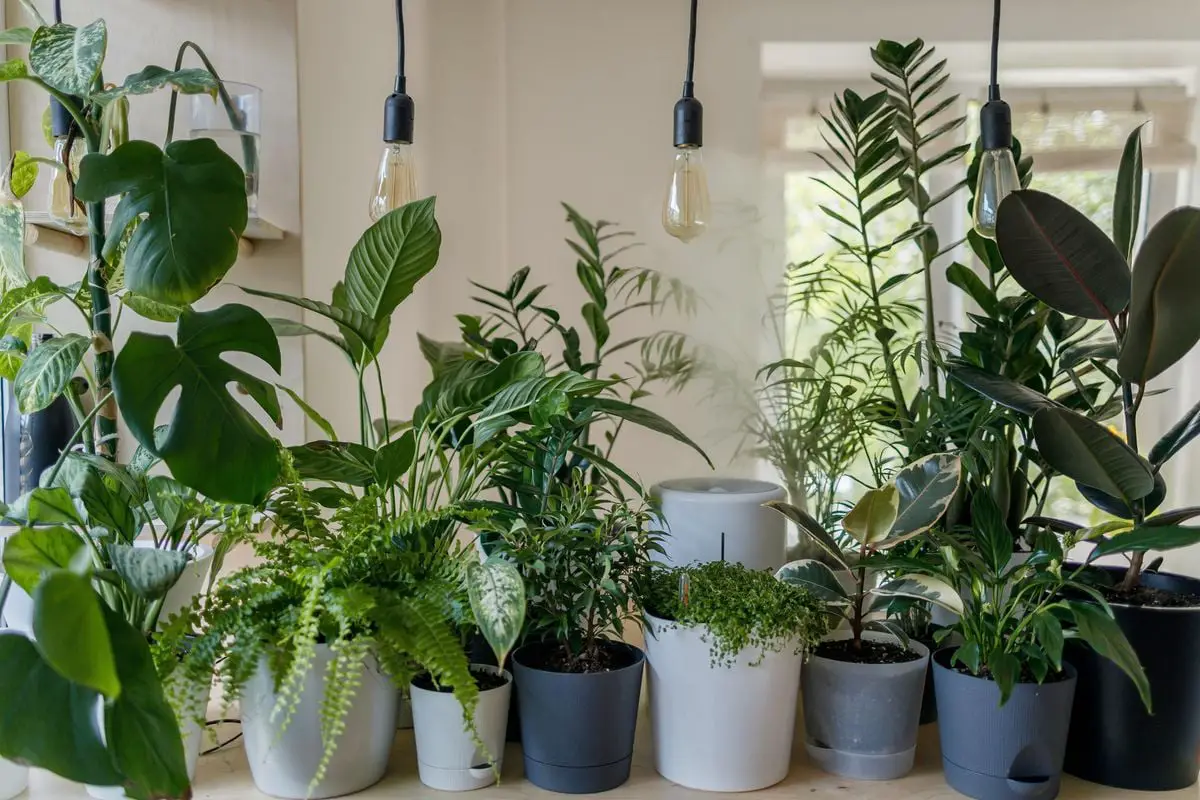
2 thoughts on “13 Big-Leaf Plants That Make A Statement In Any Home: That Bring Bold Style!”